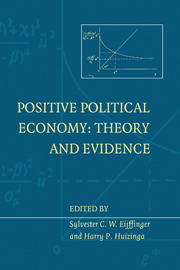Book contents
- Frontmatter
- Contents
- List of figures
- List of tables
- List of contributors
- Foreword
- Introduction
- I Monetary institutions and policy
- II Exchange rate policy and redistribution
- 7 Exchange rate anchors and inflation: a political economy approach
- Comment
- 8 Why capital controls? Theory and evidence
- 9 The political economy of the Exchange Rate Mechanism
- 10 Unemployment benefits and redistributive taxation in the presence of labor quality externalities
- Index
Comment
from 7 - Exchange rate anchors and inflation: a political economy approach
Published online by Cambridge University Press: 05 September 2013
- Frontmatter
- Contents
- List of figures
- List of tables
- List of contributors
- Foreword
- Introduction
- I Monetary institutions and policy
- II Exchange rate policy and redistribution
- 7 Exchange rate anchors and inflation: a political economy approach
- Comment
- 8 Why capital controls? Theory and evidence
- 9 The political economy of the Exchange Rate Mechanism
- 10 Unemployment benefits and redistributive taxation in the presence of labor quality externalities
- Index
Summary
Introduction and summary
How does a foreign exchange rate regime affect inflation and why is a particular regime adopted? In his contribution Edwards sets out to disentangle the answers to these two interrelated questions. To this end a small theoretical frame of reference is developed first. The authorities are assumed to minimize a weighted average of the inflation volatility and the squared deviations from an unemployment target. The minimization is subject to a rational expectations model for a small open economy that exhibits a short-run Phillips curve tradeoff. The economy is subject to external shocks. The solution of the minimum problem yields a bivariate system that explains the regime, i.e., fix or float, as a linear function of the squared average inflation rate and the volatility of external shocks. And the average inflation rate is obtained as a function of the regime and the unemployment target. In the later part of the chapter the second equation is given further underpinning by allowing for imperfectly credible fixings.
The empirical analysis is divided into two parts whereby the two equations are analysed separately, each purporting to answer one of the questions that motivated the chapter. Due to the dichotomous nature of the regime variable, a probit regression is used in analyzing the regime equation while OLS with a dummy for the regime is used for the inflation equation. In order to conduct these regressions, an impressive cross-country data set has been collected.
- Type
- Chapter
- Information
- Positive Political EconomyTheory and Evidence, pp. 213 - 216Publisher: Cambridge University PressPrint publication year: 1998



